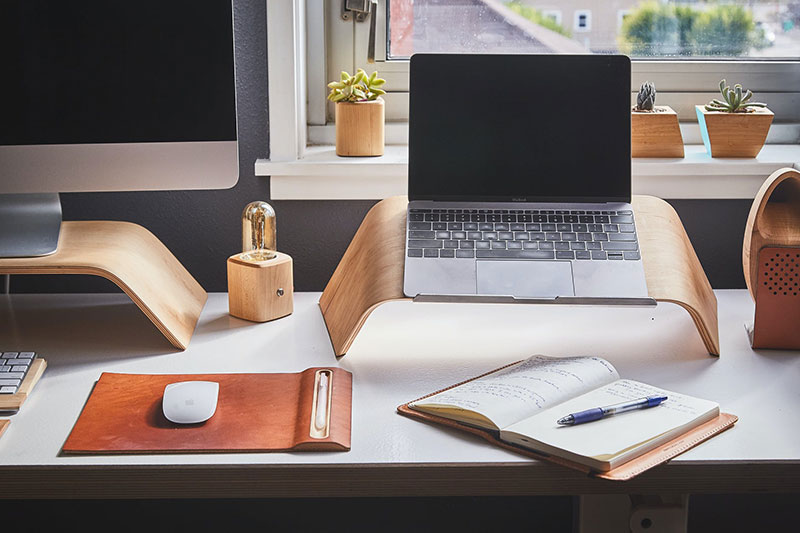Claiming Home Office Deductions – Higher Deductions for FY2020 due to COVID-19
In view of the approaching 2020 Tax Season, it is a great time now to discuss the new rates for Home Office Deductions. Many people have found themselves working remotely due to the COVID-19 Social Distancing rules, but did you know that there are expenses that can be claimed as deductions? The ATO allows for Home Office Expenses to be claimed, here are some details on what, and how much can be claimed.
All Deductions that are being claimed must have the following rules apply:
- You must have spent the money
- The expense must be directly related to earning your income
- You must have a record to prove it
There are three methods to calculate Home Office Deductions. They will be listed below in further detail.
- Fixed Rate of 80 cents per hour (COVID-19 Shortcut Method)
The ATO has introduced a straight-forward shortcut method to calculate Home Office Expense during the period from 1 March to 30 June 2020. Using this shortcut, you can claim 80 cents per hour for all relevant running expenses incurred when working from home.
The 80 cents per hour method covers all of the following running expenses,
- electricity for lighting, cooling or heating and running electronic items used for work (for example your computer), and gas heating expenses
- the decline in value and repair of capital items, such as home office furniture and furnishings
- cleaning expenses
- your phone and internet costs, including the decline in value of the handset
- computer consumables, such as printer ink
- stationery
- the decline in value (Depreciation) of a computer, laptop or similar device.
It is important to note that if you choose this method, you are NOT allowed to claim other further deductions for any of the expenses listed above.
The only record that you have to keep for this method is a timesheet for the number of hours that you have worked from home. If you are using this method, you must include the note “COVID-hourly rate” for this deduction for your Tax Return.
- Fixed Rate of 52 cents per hour
This is the usual method to calculate Home Office Expenses. This method might be more beneficial if you have high Mobile Phone/ Internet/ Equipment Expenses, as well as if you do NOT have a dedicated Home Office.
The difference between this and the 80-cent method is that you are able to claim further deductions on other expenses. Examples include Mobile Phone/Internet Expenses, as well as Office Equipment and Stationery that you purchase.
If you estimate these expenses to be high, it might be more beneficial for you to use this method, although it is slightly more time consuming. You would have to manually estimate your work usage percentage of your phone/internet/equipment.
For this method, you would still have to keep records of a timesheet for the number of hours that you have worked from home. In addition, you have to keep your receipts/bills for your other expenses that you wish to claim. Examples include mobile phone monthly bills, as well as receipts for stationery or equipment.
- Actual Running Expenses
This method is mostly only recommended if you have a dedicated Home Office, as it requires a lot of work to calculate. However, it could potentially result in the highest tax savings if you have high claimable expenses.
You have to keep the following records for this method:
- keep a record of the number of actual hours you work from home during the income year
- keep a diary for a representative four-week period to show your usual pattern of working at home
- work out the decline in value of depreciating assets and
- keep receipts showing the amount you spent on the assets
- work out the percentage of the year you used those depreciating assets exclusively for work – you can claim a deduction for the proportion of the decline in value that reflects your work-related use of the depreciating assets
- work out the cost of your cleaning expenses by adding together your receipts and multiply it by the percentage floor area of your dedicated work area (floor area of the dedicated work area divided by the whole area of the house as a percentage) – your claim should be apportioned for any
- private use of your home office
- use of the home office by other family members
- work out the cost of your heating, cooling and lighting by working out the following
- the cost per unit of power used – refer to your utility bill for this information
- the average units used per hour – this is the power consumption per kilowatt hour for each appliance, equipment or light used
- the total annual hours used for work-related purposes – refer to your record of hours worked or your diary for this information.
- For assets that costed $300 or more, you would have to calculate the decline in value for the period you
- owned the assets during the income year
- used the assets for work-related purposes
Which Method to Use?
The difference in the Home Office Running Expense Deduction between the two fixed rate methods is approximately $190.40. (Assuming 8 hours of work per day for 5 days a week) If your other expenses are higher than this figure, you might want to consider using the second option instead, for higher tax savings.
If you are confused about which method to use, or what can or cannot be claimed as a deduction, feel free to get in touch with us for a quick check! Otherwise, you can also read up more about this on the ATO website at https://www.ato.gov.au/individuals/income-and-deductions/deductions-you-can-claim/home-office-expenses/#runningexp .



1 thought on “Home Office Deductions”
Comments are closed.